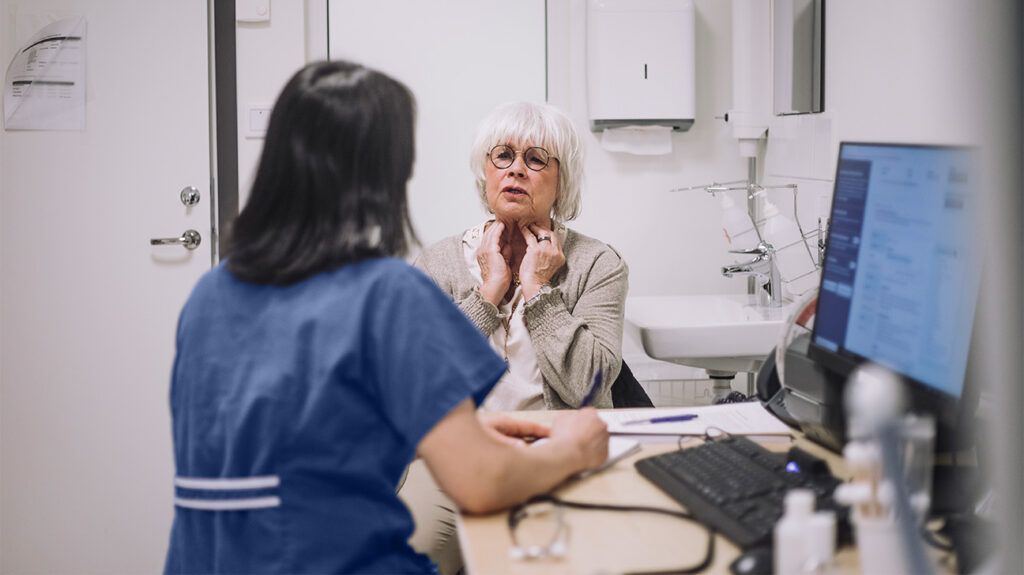An indirect laryngoscopy is a procedure that allows doctors to view the larynx, or voice box, close up without a direct line of sight. It helps diagnose irregularities of the larynx and throat.
The larynx, also known as the voice box, is positioned on top of the trachea, or windpipe.
Doctors may need to examine the larynx for several reasons, such as to help diagnose an injury or medical condition. Different types of laryngoscopies are available. An indirect laryngoscopy helps the doctor see the vocal cords close up using a mirror or video screen.
This article discusses the indirect laryngoscopy procedure, including preparation, what to expect, results, risks, and frequently asked questions.

An indirect laryngoscopy provides an indirect view of the larynx and nearby structures. This means a doctor views the airway structures
Using a laryngeal mirror is low tech and the
There is no specific preparation for an indirect laryngoscopy.
However, doctors
It is also important to follow a doctor’s instructions before an indirect laryngoscopy.
An indirect laryngoscopy usually takes
Once the numbing takes effect, the doctor may cover the tongue with gauze and hold it to prevent it from blocking the view. The doctor
Individuals may receive instructions to say a word or try to make a certain sound. This helps the doctor see the activity of the vocal cords.
Once the doctor views the larynx and throat, they are able to tell an individual their findings as soon as they complete the examination. For instance, after viewing the structures, the doctor may detect an injury.
However, in some cases, the doctor may take additional tests, such as a biopsy, to make a diagnosis of an irregularity found during the exam. The doctor will explain the need for follow-up and when to expect the results from further testing, which can take up to
Indirect laryngoscopy is generally a safe procedure. Typically, the doctor performs an indirect laryngoscopy using a local numbing medication, not general anesthesia or sedation.
Possible effects of a mirror laryngoscopy include:
- injury to the mucosa — the soft tissue in the mouth — which may cause bleeding
- laryngospasm — vocal cord spasm — and airway compromise
- gagging
- coughing
- vomiting
The following are answers to some common questions about indirect laryngoscopy.
What is an indirect laryngoscopy?
An indirect laryngoscopy is a procedure
What is the difference between a direct and indirect laryngoscopy?
A direct laryngoscope
Why do we do indirect laryngoscopy?
Doctors perform an indirect laryngoscope to
- voice issues, including:
- a breathy voice
- hoarseness
- weak voice
- raspy voice
- no voice
- swallowing difficulties
- feeling of a lump in the throat
- throat pain
Is an indirect laryngoscopy painful?
Before an indirect laryngoscopy, doctors often administer a numbing spray to decrease discomfort and gagging. This may make the exam
An indirect laryngoscopy involves using a mirror to view the larynx without a direct line of sight. Doctors perform the procedure to examine the larynx and surrounding structures.
People do not usually need to prepare in advance but should follow any instructions given to them by their doctor.
The procedure takes 5–10 minutes, and doctors will use numbing medication on the back of the throat to decrease any discomfort a person may experience. The doctor can tell an individual their findings right away. However, they may suggest further testing, such as a biopsy, depending on what they see.
Risks are minimal but may include bleeding, infection, and gagging during the procedure.
